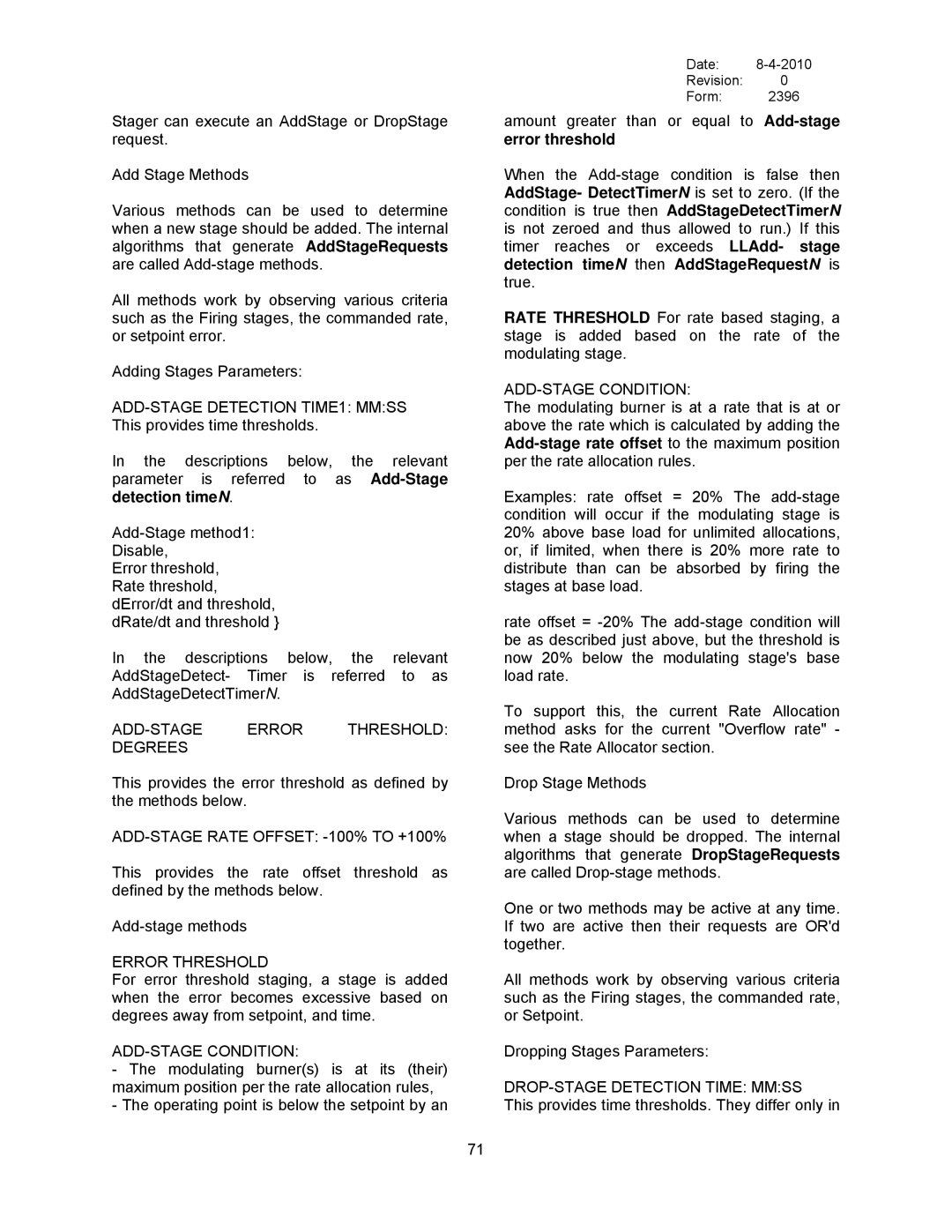Stager can execute an AddStage or DropStage request.
Add Stage Methods
Various methods can be used to determine when a new stage should be added. The internal algorithms that generate AddStageRequests are called
All methods work by observing various criteria such as the Firing stages, the commanded rate, or setpoint error.
Adding Stages Parameters:
In the descriptions below, the relevant parameter is referred to as
Error threshold, Rate threshold, dError/dt and threshold, dRate/dt and threshold }
In the descriptions below, the relevant AddStageDetect- Timer is referred to as AddStageDetectTimerN.
ADD-STAGE ERROR THRESHOLD: DEGREES
This provides the error threshold as defined by the methods below.
ADD-STAGE RATE OFFSET: -100% TO +100%
This provides the rate offset threshold as defined by the methods below.
ERROR THRESHOLD
For error threshold staging, a stage is added when the error becomes excessive based on degrees away from setpoint, and time.
ADD-STAGE CONDITION:
-The modulating burner(s) is at its (their) maximum position per the rate allocation rules,
-The operating point is below the setpoint by an
71
Date: 8-4-2010
Revision: 0
Form: 2396
amount greater than or equal to
error threshold
When the
RATE THRESHOLD For rate based staging, a stage is added based on the rate of the modulating stage.
The modulating burner is at a rate that is at or above the rate which is calculated by adding the
Examples: rate offset = 20% The
rate offset =
To support this, the current Rate Allocation method asks for the current "Overflow rate" - see the Rate Allocator section.
Drop Stage Methods
Various methods can be used to determine when a stage should be dropped. The internal algorithms that generate DropStageRequests are called
One or two methods may be active at any time. If two are active then their requests are OR'd together.
All methods work by observing various criteria such as the Firing stages, the commanded rate, or Setpoint.
Dropping Stages Parameters:
